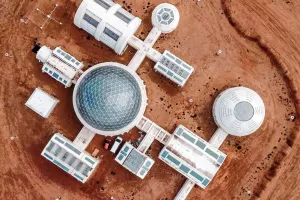Before humans have not walked out of the earth, some people may think that the earth is unique in the universe, and humans are the only wisdom life in the universe. But when humans walked out of the earth, this idea was gone. People have gradually discovered that there are many planets like the earth in the universe, and the number of alien civilizations may be many.
There are eight major planets in the solar system. These planets are revolving around the sun. So why is there only life on the earth? Why is the earth's most suitable for the birth of life compared with other planets? First of all, we must make a simple understanding of the eight major planets.
At first there were nine major planets in the solar system. Later, Pluto was officially removed at the 2006 International Astronomical Conference. The reason was that Pluto was classified as "dwarf planets" by astronomers. At this point, there are eight major planets left in the solar system. These planets have their own characteristics, and it is precisely because of the existence of these characteristics that the eight major planets operate independently.
Mercury, as the closest planet to the sun, has the strongest sunlight. So on Mercury, the temperature difference between day and night is the largest. The alternation of polar day and night makes this planet unable to give birth to life at all.
Venus is the brightest star in the solar system except the sun and the moon. Its unique place is that it is the only planet in the solar system that can rotate in reverse. On Venus, the main composition of the atmosphere is carbon dioxide, and carbon dioxide will form a powerful greenhouse effect. Therefore, the surface temperature of Venus is the highest, up to 400 degrees. Under such high temperature, any kind of creature cannot survive on it.
The composition of Mars and Earth is very similar. The only difference is that there is no ocean on the surface of Mars. The reason why Mars appears orange -red because there are a large number of iron oxide on the surface of Mars. This substance is brown, so we can see orange -red Mars.
Jupiter is a huge liquid hydrogen planet. Some scientists speculate that Jupiter will transform from a planet to a star after billions of years. Jupiter is very similar to the sun, but it is not as burning as the sun because its quality is too small. Jupiter is the largest of the eight major planets. According to the volume calculation, Jupiter's volume is equal to 1,400 earth.
Saturn is the sixth far away from the sun and the second largest planet for the solar system. The surface temperature of Saturn is extremely low, the surface atmosphere is fierce, and it is the surface of liquid. Such an environment cannot be suitable for human survival, and we cannot transform it according to the current technology.
Because Neptune is far away from the sun, the surface temperature is only -214 degrees Celsius. From this point of view alone, Neptune is not suitable for human survival. And Neptune is a gaseous planet, just like Jupiter.
There is no oxygen and water required for human survival on Uranus. Moreover, Uranus is far from the sun, and it does not reach enough temperature. Uranus is smaller than the earth, and the gravity of Uranus is not enough to support the movement of objects.


